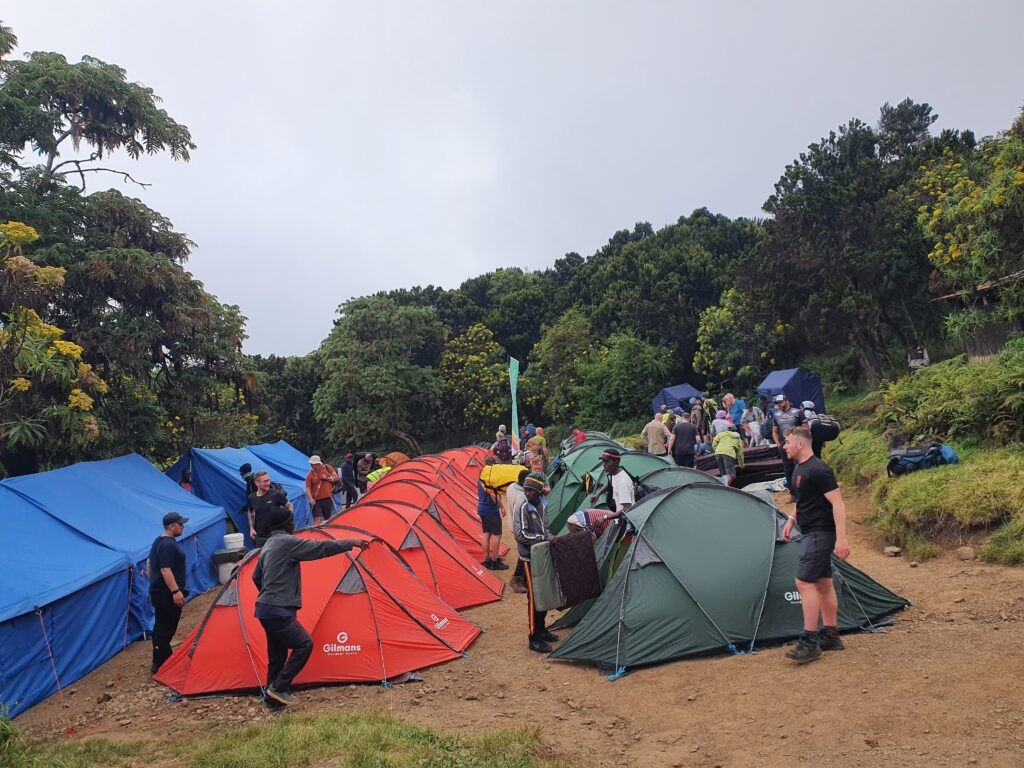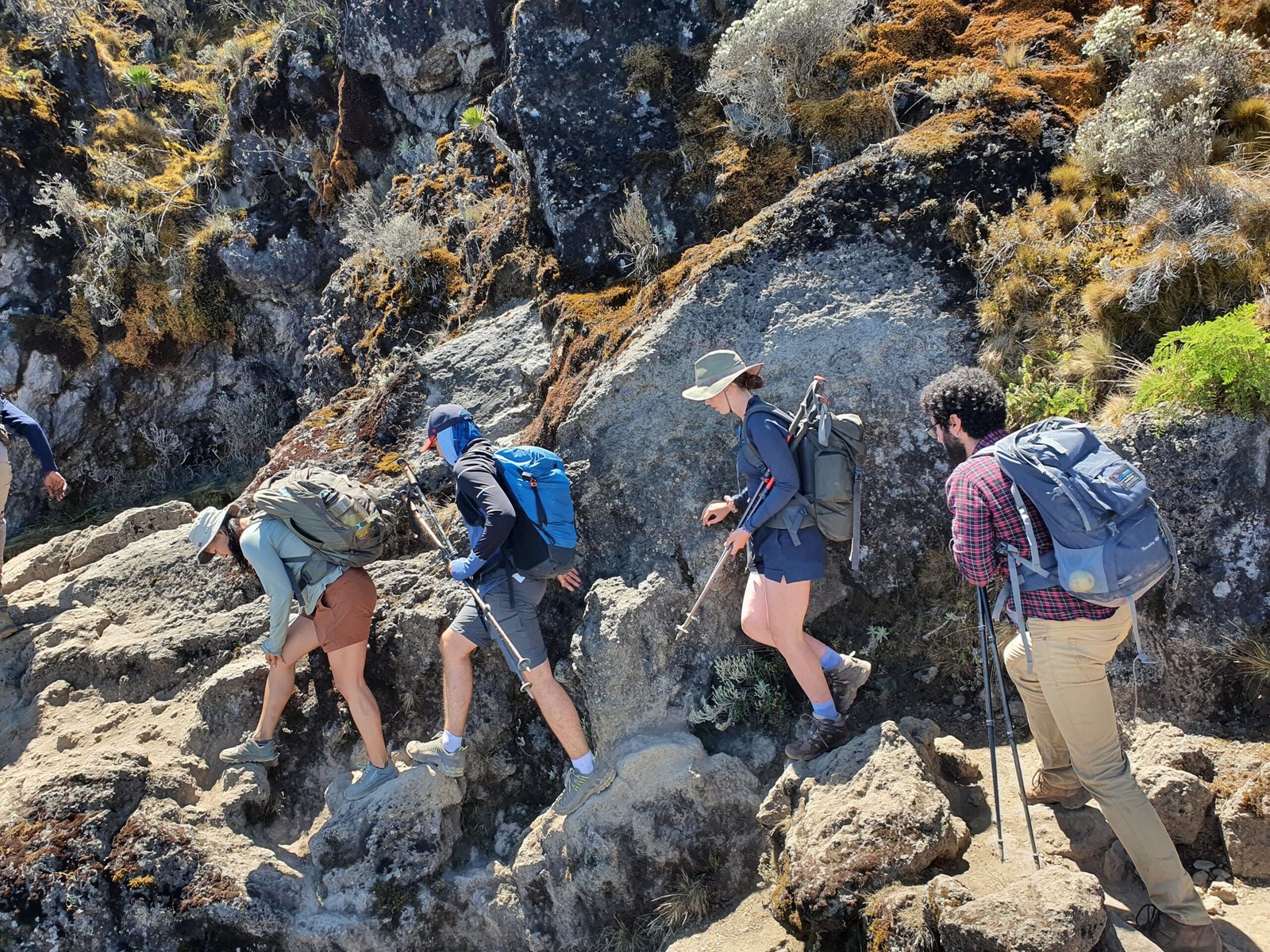Kilimanjaro Climb: Training, Packing List, and What You Need to Know
Climbing Mount Kilimanjaro, the highest peak in Africa, is an unforgettable adventure that attracts thousands of climbers every year. While it doesn’t require technical mountaineering skills, proper preparation is crucial for reaching the summit. In this guide, we’ll cover everything you need to know about training for the climb, what to pack, and essential tips to help ensure a successful summit.

1. Training for Kilimanjaro: Build Endurance and Strength
Although Kilimanjaro isn’t a technical climb, it’s physically demanding due to the altitude, varied terrain, and long days of trekking. Here’s how to prepare your body for the challenge:
Endurance Training
Hiking: The best way to prepare for Kilimanjaro is by hiking. Aim to hike 10-15 km multiple times per week, gradually increasing distance and difficulty. Incorporate elevation gain into your hikes to simulate Kilimanjaro’s uphill terrain.
Cardio Workouts: Running, cycling, swimming, and stair climbing are excellent cardio exercises to improve your cardiovascular endurance. These workouts will help your heart and lungs adjust to the lower oxygen levels at high altitudes.
Long Walks with a Backpack: Get used to carrying weight by hiking with a loaded backpack (5-7 kg). This will prepare you for the daypack you’ll carry on Kilimanjaro, which typically includes water, snacks, and extra layers.
Strength Training
Leg Workouts: Focus on strengthening your legs with exercises like squats, lunges, step-ups, and leg presses. Strong legs will help you tackle the steep and uneven sections of the climb.
Core Workouts: Strengthen your core with exercises like planks, crunches, and sit-ups. A strong core helps with balance and stability, especially when trekking with a backpack.
Upper Body Workouts: While less critical, building upper body strength can help with balance and carrying your pack. Include exercises like push-ups and rows.
Altitude Training (If Possible)
Hiking at High Altitudes: If you live near mountains, try to hike at higher elevations to get your body used to thinner air.
Altitude Tents: Some gyms offer altitude training facilities where you can work out in simulated high-altitude environments.
2. Packing List for Kilimanjaro: Gear Essentials for Your Climb
Packing the right gear is crucial for a successful Kilimanjaro climb. From the hot, humid rainforest to freezing temperatures at the summit, you’ll need clothing and gear for a wide range of conditions. Here’s a complete packing list:
Clothing
Base Layers: Moisture-wicking tops and bottoms to keep you dry and warm.
Insulating Layers: Fleece or down jacket for warmth during cold mornings and nights.
Outer Layers: Waterproof and windproof jacket and pants to protect against rain and wind.
Hiking Pants: Comfortable and breathable pants for trekking during the day.
Trekking Shirts: Quick-drying, breathable shirts (both long-sleeved and short-sleeved).
Gloves: Warm, insulated gloves for summit night.
Hat and Buff: A wool or fleece hat to keep you warm, and a buff or neck gaiter to protect against wind and dust.
Footwear
Hiking Boots: Waterproof, durable boots with good ankle support. Make sure they are well broken in before your climb.
Camp Shoes: Lightweight shoes or sandals to wear around camp after trekking.
Warm Socks: Wool or synthetic socks that wick moisture. Bring several pairs to keep your feet dry and warm.
Sleeping Gear
Sleeping Bag: A high-quality sleeping bag rated for cold temperatures (-15°C or lower).
Sleeping Pad (if not provided): An insulated sleeping pad for added warmth and comfort during cold nights.
Daypack and Gear
Daypack (25-35 liters): A small backpack for carrying your essentials, including water, snacks, and extra clothing layers.
Hydration System: Water bottles or a hydration bladder (3-liter capacity recommended).
Trekking Poles: Helpful for stability on steep or uneven terrain and can reduce the strain on your knees during descents.
Headlamp: A headlamp with extra batteries for the early morning summit push.
Sunglasses: UV-protection sunglasses to shield your eyes from the bright sun and snow glare at high altitudes.
Gaiters: Optional, but useful to keep debris and water out of your boots.
Other Essentials
Snacks: Energy bars, nuts, and dried fruit to keep your energy up during long treks.
Personal Medication: Altitude sickness medication (Diamox), pain relievers, blister care, and any personal medications.
Sunscreen: High SPF sunscreen to protect your skin from the sun’s intense rays at high altitudes.
Lip Balm: SPF lip balm to protect against dry, cracked lips from the wind and cold.
Towel: A lightweight, quick-drying towel for camp use.
Toiletries: Basic toiletries like toothbrush, toothpaste, biodegradable soap, and toilet paper.
First Aid Kit: A small first aid kit with essentials like bandages, antiseptic wipes, and painkillers.
3. What You Need to Know Before Climbing Kilimanjaro
There’s more to climbing Kilimanjaro than just training and packing. Here are some key things to know before you start your adventure:
1. Choose the Right Route
There are several routes to the summit, each offering different challenges and experiences. Popular routes include:
Machame Route: Known for its scenic views and better acclimatization, it takes 6-7 days and is considered moderately difficult.
Marangu Route: The only route with hut accommodations, it’s a bit easier but has a lower success rate due to its shorter duration (5-6 days).
Lemosho Route: A longer, quieter route that offers excellent acclimatization and stunning views over 7-8 days.
Rongai Route: A quieter route from the north side, with a more gradual ascent over 6-7 days.
2. Acclimatization is Key
Altitude sickness is one of the main challenges when climbing Kilimanjaro. Symptoms like headaches, dizziness, and nausea can derail your summit attempt if not managed properly. To acclimatize, it’s important to:
Go slow: Take your time and walk at a slow pace to conserve energy.
Stay hydrated: Drink 3-4 liters of water daily to help your body adjust to the altitude.
Listen to your body: If you experience severe symptoms, inform your guide. They are trained to manage altitude sickness and can adjust your pace or recommend medication.
3. Prepare for Summit Night
Summit night is the most challenging part of the Kilimanjaro climb. You’ll start your ascent around midnight to reach Uhuru Peak at sunrise. Expect freezing temperatures, steep inclines, and the effects of high altitude. Here’s what to keep in mind:
Layer up: Temperatures can drop to -20°C, so wear multiple layers to stay warm.
Go at your own pace: Slow and steady wins the race. The summit push is tough, but staying focused and conserving your energy will get you to the top.
Stay mentally strong: The final ascent is as much a mental challenge as a physical one. Keep a positive attitude, take breaks when needed, and remember your goal.
4. Tipping is Customary
Tipping your guides, porters, and cooks is expected after your climb. Budget around $250-$350 per climber for tipping the entire team. Your tour operator can provide guidelines on how to distribute the tips among the crew.
4. Final Tips for a Successful Kilimanjaro Climb
Start training early: Begin your physical training at least 2-3 months before your climb to build up the necessary endurance and strength.
Choose a reputable tour operator: Look for an operator with experienced guides, good safety protocols, and positive reviews.
Don’t skimp on gear: Invest in high-quality gear, especially for cold-weather clothing and a good pair of hiking boots.
Stay positive and enjoy the journey: Kilimanjaro is a challenging but rewarding experience. Embrace each day on the mountain, and keep your eyes on the goal—the summit of Africa’s highest peak.
Ready to climb Kilimanjaro? Start your training, pack your gear, and get ready for the adventure of a lifetime!

